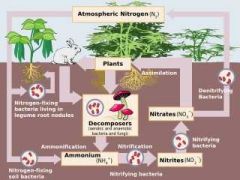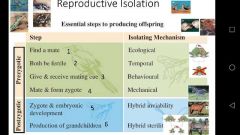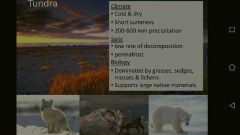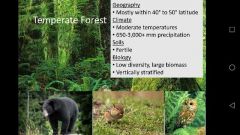![]()
![]()
![]()
Use LEFT and RIGHT arrow keys to navigate between flashcards;
Use UP and DOWN arrow keys to flip the card;
H to show hint;
A reads text to speech;
31 Cards in this Set
- Front
- Back
- 3rd side (hint)
|
Ammonification |
As organisms die certain microbes decompose organic nitrogen into ammonia to be used in the process of nitrification |
|
|
|
Denitrification |
Reduction of nitrates commonly by bacteria in the soil that usually results in the escape of nitrogen into the air |
De-nitrifi no longer useful |
|
|
Mineralization |
Decomposition or oxidation of the chemical compounds in organic matter if into plant accessible forms. |
Opposite of immobilization |
|
|
Biogeochemical cycles |
◾Exchange of chemicals within an ecosystem (closed) ◾Time scale< geochemical ◾Nutrients stay in system |
|
|
|
Gross primary productivity |
amount of chemical energy as biomass that primary producers create in a given length of time. (GPP is sometimes confused with Gross Primary productivity, which is the rate at which photosynthesis or chemosynthesis occurs.) |
|
|
|
Immobilization |
conversion of inorganic compounds to organic compounds by micro-organisms or plants, by which it is prevented from being accessible to plants. |
Immobilization is the opposite of mineralization |
|
|
Net ecosystem productivity |
the difference between gross primary production and total ecosystem respiration, represents the total amount of organic carbon in an ecosystem available for storage, export as organic carbon, or nonbio- logical oxidation to carbon dioxide through fire or ultraviolet oxidation. |
|
|
|
Geochemical Cycle |
◾Exchange between ecosystems ◾Open cycle ◾Time scale is long |
|
|
|
Coriolis effect |
an effect whereby a mass moving in a rotating system experiences a force (the Coriolis force ) acting perpendicular to the direction of motion and to the axis of rotation. On the earth, the effect tends to deflect moving objects to the right in the northern hemisphere and to the left in the southern and is important in the formation of cyclonic weather systems. |
|
|
|
Nitrogen Cycle |

|
|
|
|
Soil horizons |
◾Different regions have different soil characteristics ◾Soil is dynamic |
|
|
|
Biome |
A large community of plants and animals that occupies a distinct region. Terrestrial biomes, typically defined by their climate and dominant vegetation, include grassland, tundra, desert, tropical rainforest, and deciduous and coniferous forests |
|
|
|
3 pathways for nutrient cycling |
◾BioChemical ◾BioGeoChemical ◾GeoChemical |
|
|
|
BioChemical cycle |
Internal redistribution of nutrients within an organism ◾Plant moving nutrients around to where they are most needed ◾Animals regulate chemical composition,excretion of waste materials |
|
|
|
Forms of Nitrogen and plant uptake: N2 |
Nitrogen gas (biological fixation) |
|
|
|
Forms of Nitrogen and plant uptake:NH3 |
Ammonia gas, foliar absorbtion |
|
|
|
Forms of Nitrogen and plant uptake: NH4+ |
Ammonium ion, uptake by plants (leaves or roots) bound to soil, or converted to NO3- |
|
|
|
Forms of Nitrogen and plant uptake: NO3- |
Nitrate, uptake by plants, bound to soil or leached from the system |
|
|
|
Nitrification |
Ammonium is oxidized to nitrites and then to nitrates |
|
|
|
What influences climate? |
Sun+Tilt of the earth=Predictable seasonality |
|
|
|
Transpiration |
Plants transferring large amounts of water from soil to the atmosphere |
|
|
|
EvapoTransperation |
Combined evaporation of water from soil and leaf surfaces |
|
|
|
Essential steps to producing offsprings |

|
|
|
|
______ variation in a population is necessary for evolution by natural selection |
Genetic |
|
|
|
Decomposition rates higher in_______than temperate forest |
Tropical (both increasing moisture correlated with increased decomposition rate) |
|
|
|
Tundra- Climate, Soil and Biology |

|
|
|
|
Boreal forest aka taiga-Climate, Soil and Biology |

|
|
|
|
4 major biomes in canada |
Tundra Boreal forest Temperate forest Grassland |
|
|
|
Temperate forest-Climate, Soil and Biology |

|
|
|
|
Temperate grasslands-Climate, Soil and Biology |

|
|
|
|
The sun and tilt of the earth drive: |
◾Seasonality ◾Patterns of precipitation and air circulation ◾Result in predictable climate variation with latitude |
|

